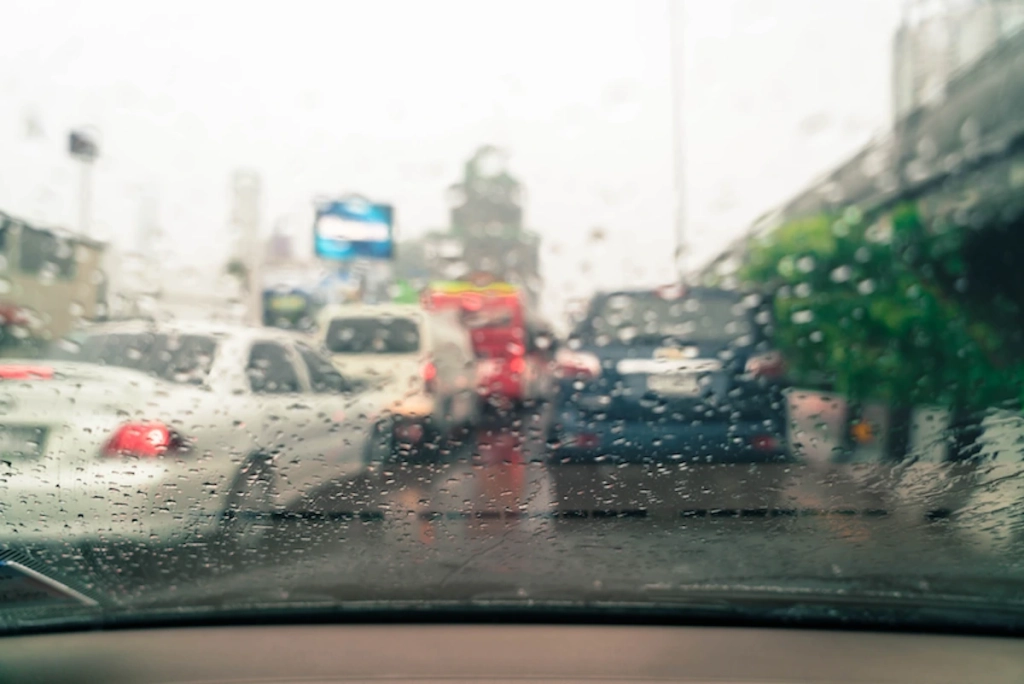
The rainy season in the Philippines brings cooler days and welcome relief from the summer heat, but it also presents unique challenges on the road. With wet roads, poor visibility, and unpredictable conditions, driving in the rain becomes a task that demands more than just skill.
It calls for awareness, patience, and preparation. Whether you’re commuting through city traffic or heading home, these safety tips can help ensure each journey remains safe and stress-free.
Understand the Impact of Wet Weather on Road Conditions
Wet Pavement and Slippery Roads
Rainwater reduces the friction between your tires and the road surface, making even familiar streets more dangerous. Wet pavement significantly limits your tires’ grip, especially if your tread depth is already low.
This is why roads are most slippery during the first few minutes of a downpour, as oil and grime rise to the surface. Slippery roads can cause even experienced drivers to skid when turning or braking too quickly. The key is to understand that familiar routes can become unpredictable under wet conditions.

Reduced Traction and Skidding Risks
Skidding is often the result of sudden actions: sharp turns, abrupt acceleration, or hard braking. In wet weather, tires are less responsive, and regaining control after a skid can be difficult. Ensuring your tires have adequate tread depth is essential for good traction.
Worn tires are more prone to hydroplaning, which means losing contact with the road entirely. Keeping a manageable speed and making smooth movements can drastically reduce this risk.
Avoid Hydroplaning
When a layer of water builds between your tires and the road, it creates a condition known as hydroplaning. This causes your car to glide uncontrollably, ignoring steering inputs. It usually occurs at speeds above 55 km/h, especially when standing water is present.
To avoid this, ease off the gas pedal, steer gently, and never use cruise control. Tire maintenance and reduced speed are your best defences.
Dangers of Standing Water
Flooded roads may hide potholes, debris, or sudden drops. Even a shallow pool can result in losing control or stalling your engine. If you’re unsure about the depth, it’s safer to find another route. Awareness and caution are your best strategies to stay safe in such wet conditions.
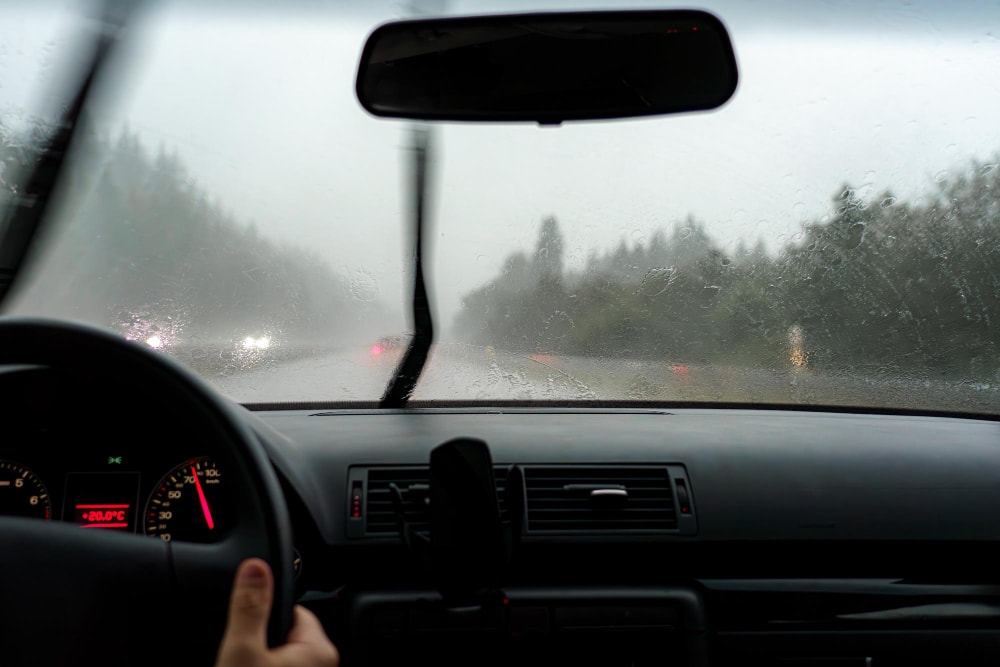
Safety Driving Tips During Rainy Season
Windshield Wipers and Visibility
Proper windshield wipers are essential for good visibility. Old or damaged wiper blades can leave streaks or fail to clear the glass, increasing the risk of road accidents. Clean windshields and responsive wipers dramatically improve your ability to navigate during heavy rain.
Tire Maintenance and Tread Depth
Check your tire pressure and inspect for cracks or uneven wear before driving. The correct tire pressure ensures good traction and fuel efficiency. Tires with insufficient tread depth are especially dangerous during the rainy season because they can’t disperse water efficiently.
Ensure the Good Condition of Brakes
Wet conditions test your brakes more than usual. Make sure the pads and discs are free of rust or grime. If your brake pedal feels soft or you hear squealing noises, get it checked immediately. Reliable braking performance is crucial to handle sudden stops and maintain a safe distance from the vehicle ahead. Neglecting this can lead to increased stopping distances on wet roads.
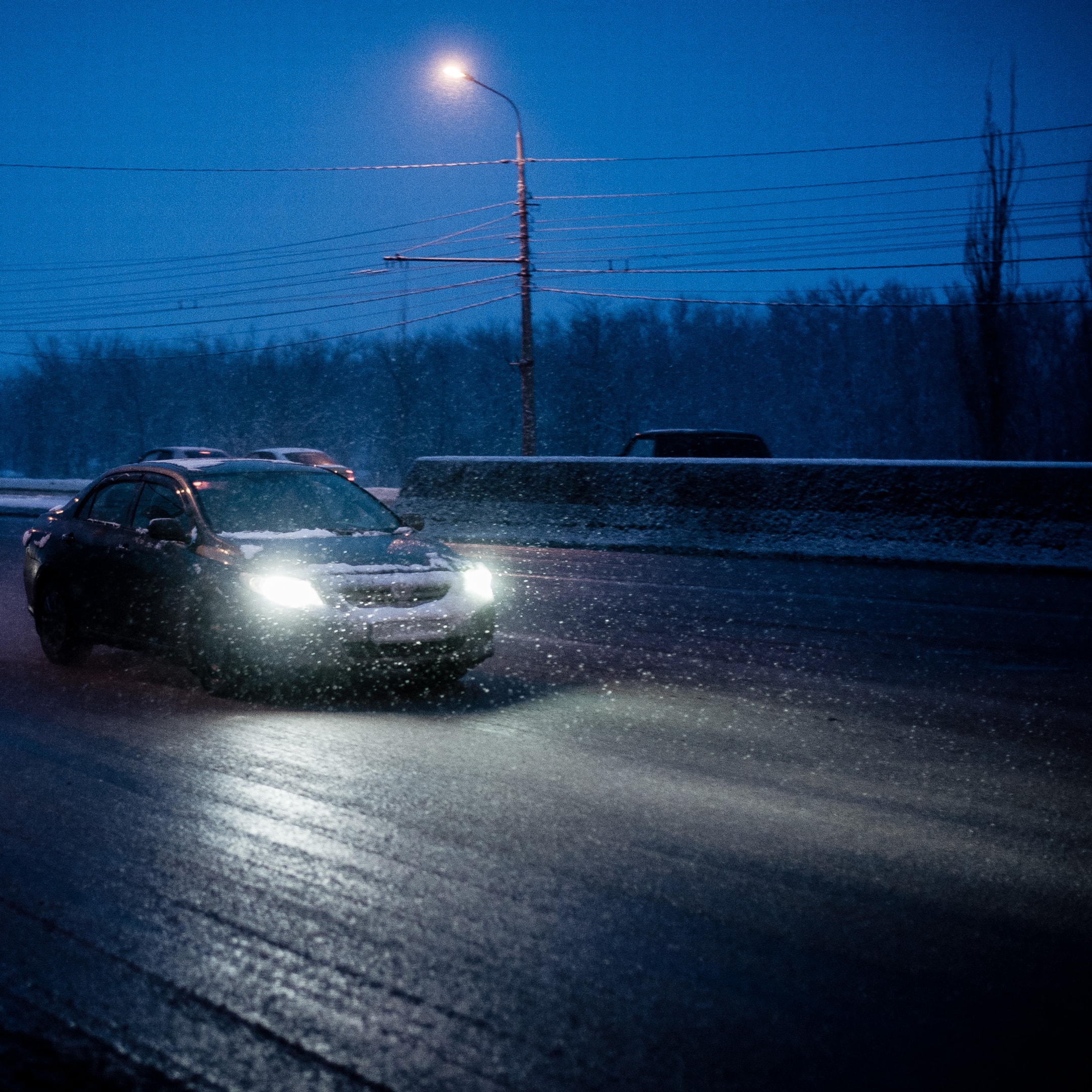
Lighting Systems and Fog Lights
During rainy weather, you need to be seen as much as you need to see. Ensure your low beam headlights and fog lights are functioning. Never use high beams in rainy conditions, as they reflect off raindrops and impair vision for you and other drivers.
Your signal lights and brake lights should also be checked regularly to ensure they’re bright enough to alert other vehicles in reduced visibility.
Adjust Your Driving Habits for Safety
Reduce Speed and Drive Slowly During Heavy Rain
Lowering your speed is the most effective way to reduce the chances of losing control. In the rainy season, the maximum posted speed limits often exceed what is safe for the conditions.
Always adjust your speed to what feels safe and manageable. Slower driving gives you more time to react and helps prevent sliding on slippery roads. This also helps avoid hard braking.
Maintain a Safe Following Distance from the other car
Always maintain a safe distance between your car and the vehicle ahead. A good rule of thumb in wet weather is to double your usual following distance.
This allows enough time to brake gently and help avoid slamming, which can cause skidding. Whether in city traffic or on provincial roads, extra space is your safety cushion during bad weather.
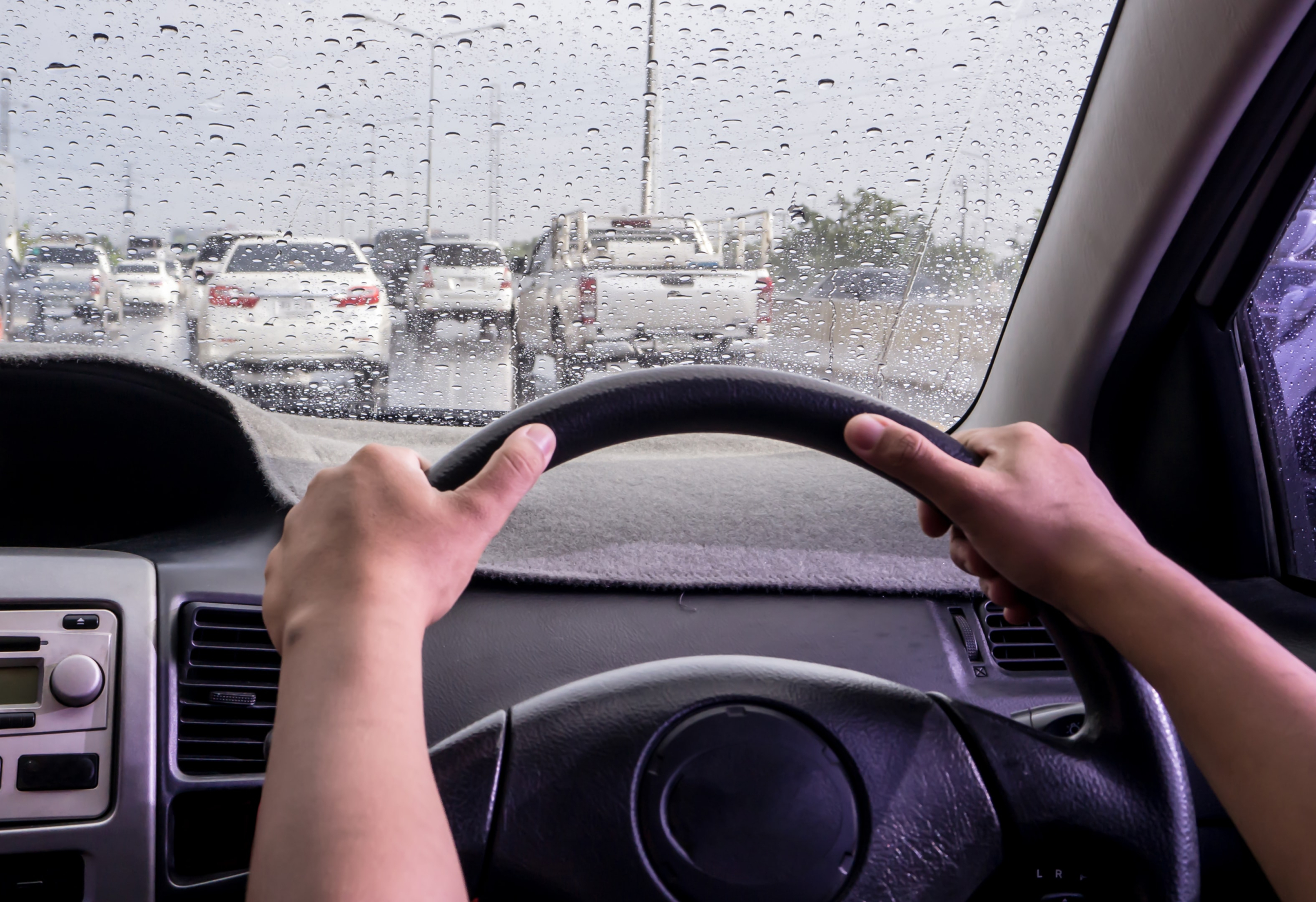
Avoid Using Cruise Control When Driving in the Rain
While cruise control is convenient on dry highways, it is dangerous in wet weather. It can delay your reaction time and increase the risk of hydroplaning. When experiencing inclement weather, it’s better to control your pedal manually. This gives you the ability to respond quickly to changing road conditions or hazards.
Stay Alert to Other Drivers
Other drivers may not exercise the same level of caution. Pay close attention and be aware of unpredictable movements, sudden stops, or lane changes.
Defensive driving means anticipating mistakes, not just reacting to them. In areas like Metro Manila where congestion is common, vigilance helps you avoid fender benders and more serious road accidents.
Know What to Do in Emergency Situations
Prevent Skidding or Loss of Control
If your car begins to skid, avoid panicking. Steer in the direction you want to go and avoid overcorrecting. Do not slam on the brakes; instead, lift your foot off the gas pedal and let the vehicle slow naturally. Regaining control takes calm, steady hands and understanding how your steering wheel responds under pressure.
Pulling Over During Heavy Downpours
If visibility becomes too poor or the rain is overwhelming, pull over to a safe location. Avoid stopping near intersections or curves where other vehicles might not see you in time.
Keep your hazard lights on and wait for the heavy downpour to pass before continuing. It’s always better to be late than risk your life in dangerous weather conditions.
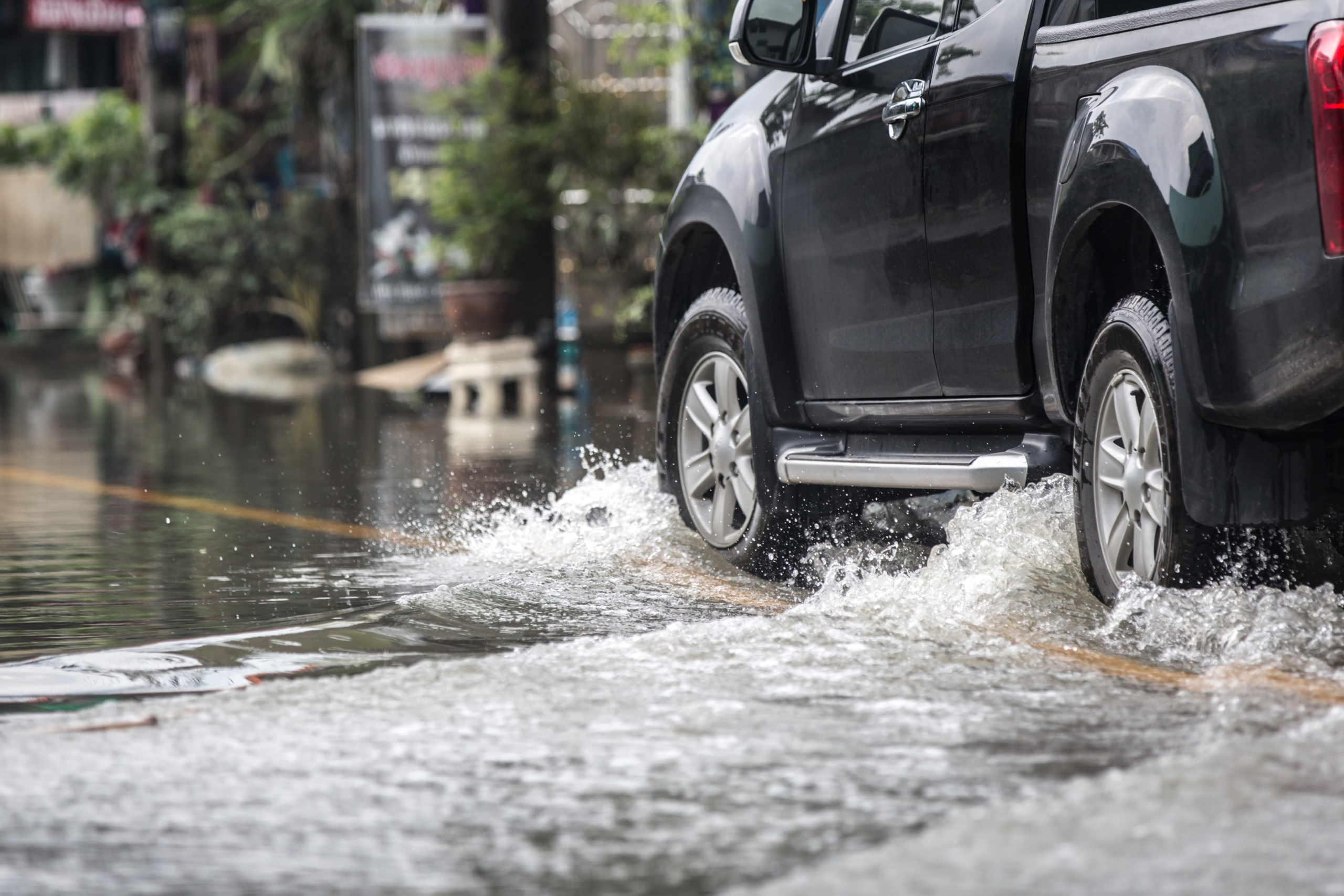
Dealing with Flooded Roads
Never drive through water unless you’re certain it’s shallow and safe. Water entering your engine can lead to costly damage and potential stalling. For residents in flood-prone communities, Metro Manila, always check weather alerts before heading out and know your area’s flooding history to avoid accidents.
Emergency Supplies and Readiness
Keep essentials like a flashlight, first aid kit, jumper cables, and bottled water in your car. Especially for families living in semi-rural locations like Camella Tanza or Camella Savannah, where help may take longer to arrive, having a well-stocked emergency kit can make a significant difference. Prepare for delays and uncertainties as a basic part of road safety.

Conclusion: Drive Smart, Drive Safe
Navigating the Philippine roads during the rainy season is a challenge, but it can be met with the right safety precautions. By following these wet weather driving tips, you greatly increase your chances of staying safe.
Whether you’re driving back to a Camella community or just heading to work, remember that safety starts with you. Make every effort to drive safely and be extra cautious. Safe driving!

Celebrate Life’s Milestones in Camella!
House and Lot & Condominium for Sale in the Philippines


